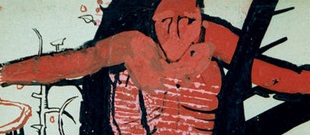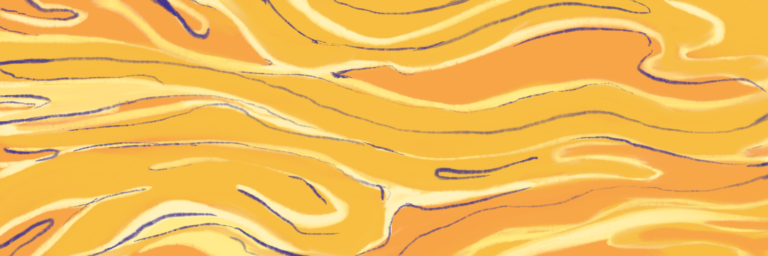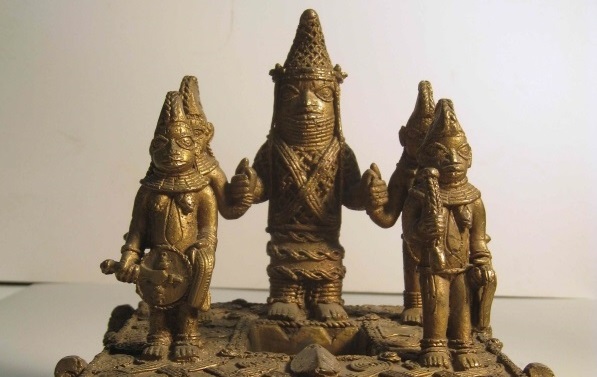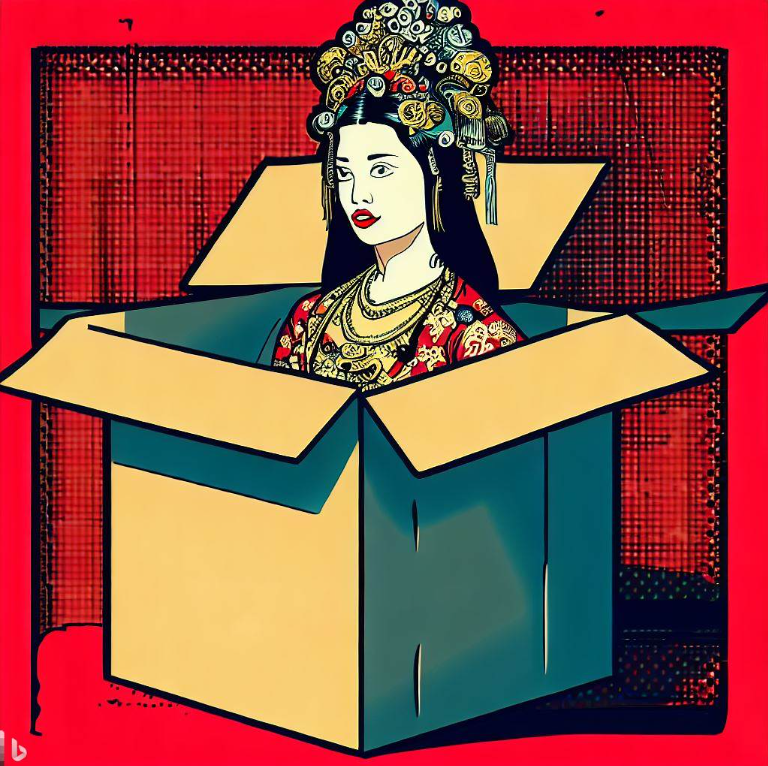Panzer vor! Japanese anime and social memories of the Asia-Pacific War
by Kimberley Eckersley
This article offers an introduction to understanding how collective narratives of Japan in depictions of the Asia-Pacific War function as a contested space for personal identity to operate within Japanese animation (anime). In the aftermath of the Asia-Pacific War (1941-1945), conceptions of collective identity turned away from the ultranationalist political organisation of the Imperial system. With the policy of total defeat came notions of total resistance, and when that resistance collapsed the result was an American reconstruction effort to position Japan at the vanguard of liberal democracy in East Asia. The hastily concocted Constitution of Japan incorporates one (in)famous provision, which devoted right wing elements in Japan’s foremost political party, Jiminto—the Liberal Democratic Party (LDP)—have sought to revise: Article Nine. Article Nine is the clause that commits Japan to pacifism, and is the source of continuing political debates about the role of Japan in the current regional security network and its historical role in the perpetuation of war crimes. To help illustrate the impact of anime on the myth-making in contemporary Japanese socio-historical subjectivities, this article examines two examples of anime, the series Girls und Panzer (premiered 2012) and the film The Sky Crawlers (2008).
What is Garupan? Interrogating the subject position in historical memory
Moe military is a subgenre in Japanese animation used to describe two competing elements. Moe details a specific relationship the viewer forms with animated fiction, it describes an affection for cute fictional characters, particularly in its relation to neoteny and the promotion of the shojo (or young girl) figure. This affection is rendered in the interaction between reader and character, rather than existing as a state of being, producing an orientation towards fiction. [1] Such an orientation is not unique to Japan or Japanese animation, but was allowed to develop in Japanese fan communities alongside the progenesis of contemporary manga/anime that formulated the shojo figure. Girls und Panzer (Garupan—Garuzu ando Pantsa in romaji) is moe military; a unique concoction of earnestly expressive high school girl characters amidst the distinctly fetishistic mechanistic aesthetic approach to articles of warfare (Fig. 1). In the context of Japanese memories of the War, the kind of engagement proffered in this new environment recontextualises how it is that those memories are understood. The series itself takes place in an alternative present, where it is considered standard for high school girls to take sensha-do (lit. ‘way of the tank’ or ‘tankery’) classes and participate in inter-school tournaments. The protagonist Miho comes from a family of prestigious tank commanders, but due to a perceived lapse in judgement she loses faith in her ability to command tanks and transfers to the Ooarai school. While initially reluctant to join Ooarai’s own sensha-do team, she rediscovers her passion for it over the course of the series, forming relationships around the tanks between varied characters with wide-ranging concerns and desires (Fig. 2). The title is demonstrative of the aesthetic influence derived from wartime Germany, with all the tanks and schools having correlating contemporary national affiliates.

‘Panzer vor!’ is the order given at the beginning of every tank battle, uttered in a high, child-like pitch, which neuters this otherwise clearly militaristic imperative—’tanks forward!’ Though Girls und Panzer is moe military, but it is not directly concerned with the War in its depiction—the girls are quick to remind each other that they take part in a competition, a tournament of tank battles between schools rather than actual warfare. This is a common trend, as anime has often trended away from direct evocations of militarism or talking about the Asia-Pacific War specifically. Instead, series such as Garupan attempt to express the traumatic elements of war loss and the atomic strikes in any collective past through aesthetic renditions of specific events (such as the bombed out space that marks the ‘Old Tokyo’ of Otomo Katsuhiro’s 1988 Akira ) or the iconography of specific instruments of war (e.g. the eponymous Yamato battleship in Matsumoto Leiji’s 1970s anime series Space Battleship Yamato). As a style of anime, the subgenre of moe military is usually configured as a form of simulation fiction (fiction that draws upon, but does not correspond directly to historical events). This places each Garupan character and their schools in a unique position. Every character is concerned with an ethical function, which grants them access to peculiar social memories in the context of the show’s evocations. It could be argued that these converging character interests in an aestheticised ‘war game’ inform the Japanese audience’s formulation of myth in social memories of the Asia Pacific War.

The Sky Crawlers and perpetual warfare, the cultural effect of simulation fiction
The character Kannami is our main reference point in Oshii Mamoru’s 2008 film The Sky Crawlers, which is not moe but could be argued to carry the same infantalisation of its characters in their artistic design. A pilot for the Rostock Corporation, Kannami and the other pilots of Area 262 are hired participants in the creation of a phoney war that is used as both comfort and entertainment to a wider population that has become accustomed to warfare as part of the everyday. In his journey of self-discovery Kannami befriends the other pilots and tries to uncover the relationship that seems to have existed between himself and base operator Kusanagi. The film concerns itself with this everyday exposure to life and space, how the pilots adapt to having to be constantly on call in a vast, unchanging, and relatively void plateau. Human contact is minimal, and the strange circumstances of each of the pilots means that none of them have been able to physically age beyond adolescence (Fig. 3). Kannami’s own suspicions about the nature of his relationships to the other pilots comes to a head towards the end of the film as the realisation that he is encountering the same illusory human shadows of an ‘original person’ time and again. Reincarnation plays a big role in the film, and scenes of children and visions of an excellent adversary underline the truly diverse role of time in impacting these characters left in limbo. In the world of The Sky Crawlers death and birth are fully simultaneous, linear, and cyclical (Fig. 4).

It can be argued that these pilots serve an historical function. They are allusions to wartime Japan’s air force, who famously included tactics such as deploying kamikaze pilots in the Asia Pacific War. The Sky Crawlers offers a different approach to pilots’ status as arbiters of regulatory bodily agency and Imperial masculinity. The characters’ choices to take on the role of proxy-war performers is complicated by their designs, which can be construed as evoking a vulnerable and childlike status. Similar to how the girls of Ooarai in Girls und Panzer find in the tanks a local memory (the school itself detached from national history/identity), characters and equipment in The Sky Crawlers are de-familiarised. As moe assists us in understanding the function of Garupan to reveal the identity of the characters in aestheticised historical narratives, The Sky Crawlers (in lacking the moe affect) utilises elegy and the eternal present as its genre in confronting prior depicted narratives about the War. The visual grammar of previous Japanese war films that expressly concern the air force depict a hegemonic masculine ideal realised through the subordination of love to sacrifice in the narrative. For The Sky Crawlers this rendition is inadequate. Instead, it seeks to express the notion of a post-War that extends forever. This ‘allegory of eternity’ embodied in vulnerable characters, who themselves are reconfigurations of cyclical death, offers to the audience through anime an interpretive schema of human consciousness.
Myths and social memory in Japanese simulation fiction
Both Garupan and The Sky Crawlers create a heterogeneous body politic, and produce an historical consciousness for their audiences which both challenges and yet also echoes current Japanese subjectivities. In both public and private spheres this chiefly takes the form of myth-making. These myths form an intermediary between reality and artifice. The myth of deathless airborne dogfights, or aggressionless tank battles as an artificial reproduction of events in the Asia-Pacific War. [2] The interaction with and experience of the War, in addition to the results of the War itself, are mediated through myths—here highlighted by simulation fiction—in collective Japanese social consciousness to create a contiguity between individual and state conceptions of war, and the politicised debates of a Japanese future which may or may not have an offensive military. Moe military is a subgenre of a subculture in which these reflexive and seemingly dichotomous concepts of aggressor and pacifist break binaries and exist contiguously. Though not strictly moe, The Sky Crawlers also sits squarely within this practice of myth making.
As seen through moe military and parallel militarised anime, it is starkly evident that Japanese collectivity today is at an impasse. The refusal to fully integrate their own perpetrator-cum-victim status in state institutions and media platforms had foreclosed any ability to overcome the traumatising culture of defeat, one which is maintained by struggle over the idea of a national moral consciousness. The direct experience of the Asia-Pacific War (and immediate post-War) is fading in Japanese collective memory, and not disclosed in public discussions of history. In lieu of these outlets, a paradigmatic shift in emphasis has taken place whereby the aesthetic template of war films have been taken and repurposed, becoming almost rhizomatic in quality. The imagined narrative, the ‘myth’ of war, has begun to surpass and suppress reality. As briefly explained in this article, this practice, here depicted in anime, almost reconfigures social memory. It challenges the subject even as political forces seek to amend the Japanese Constitution. These imagined war scenarios then inform cultural discourses of national trauma. The Sky Crawlers and Girls und Panzer both underscore the significance of this shift in Japanese collective historical memory. Simulation fictions rework this dynamic through a complicated arrangement of aesthetics, sentiment, and cultural subtext so that these texts more accurately reflect not the myth of the War itself, but rather the myth of the social memory about the War.
Author’s note: I also wish to acknowledge the generous help and time afforded to me in the writing of this piece by editors Ellan A. Lincoln-Hyde, Andrea Janku, and special external editor Luna Chiaverini. I particularly welcome the intricate feedback and assistance given their own busy schedules.
Suggested reading:
Ching, Leo T. S. Anti-Japan: The Politics of Sentiment in Postcolonial East Asia. London: Duke University Press, 2019.
Igarashi, Yoshikuni. Bodies of Memory: Narratives of War in Postwar Japanese Culture, 1945-1970. Princeton: Princeton University Press, 2000.
Standish, Isolde. Myth and Masculinity in the Japanese Cinema: Towards a Political Reading of the ‘Tragic Hero’. London: Curzon Press, 2000.
Yoshitani, Hiroya. “Anime Pilgrimage and Ema (Picture Tablets): the Case of Oarai Isosaki Shrine.” Bulletin of Komatsu College 23, no. 2 (2016): 17-28.

Kimberley Eckersley
she/her
Contributor (2022)
I am a Japanese Studies MA student at SOAS with interdisciplinary interests in exploring the impact on society of media, politics, and economy. My aim is to relate experiences through a syncretic and systematised interpretation of case studies to examine what they may mean on a macro-level. My BA History dissertation was on the role of myth in re-examining depictions of the Asia-Pacific War, my MA studies hope to engage with discourses on transgender sentiment and philosophies of experience in Japanese media.
Twitter: Kimberly Eckersley
SOAS History Blog, Department of History, Religions and Philosophy, SOAS University of London







